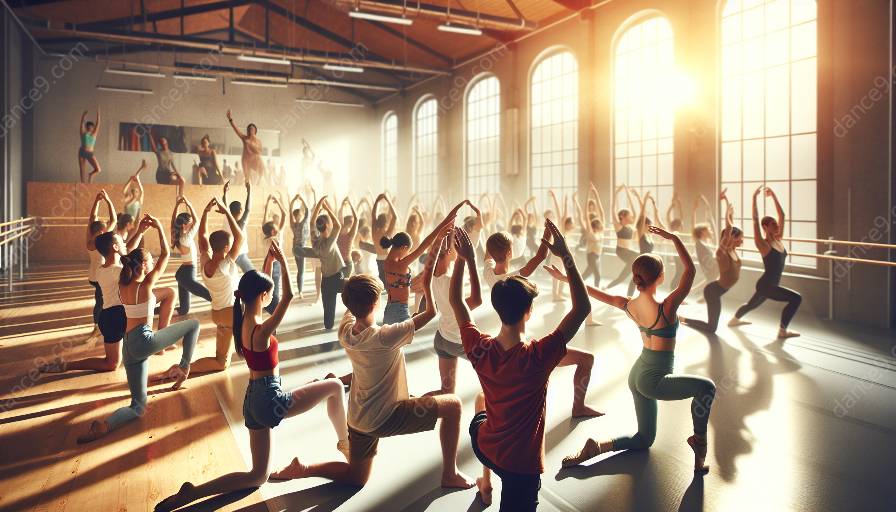Dance is not only a physical activity; it is also a reflection of the cultural and social context in which it exists. As students embark on their journey through the world of dance, they are influenced by a myriad of factors, including their cultural background, social environment, and personal experiences. These factors play a crucial role in shaping the resilience of dance students, impacting both their mental and physical well-being.
Resilience in Dance
Resilience in the context of dance refers to the ability of students to overcome challenges, persevere through setbacks, and adapt to the demands of the discipline. It encompasses mental, emotional, and physical fortitude, as dancers constantly face pressures such as performance anxiety, competition, and the demands of rigorous training.
Cultural Influence
The cultural background of dance students profoundly shapes their resilience. Cultures have varying attitudes towards dance, the arts, and physical activity, which can impact a student's perception of their own abilities and the value of their pursuit. For example, in some cultures, dance may be deeply ingrained in traditions, offering a sense of purpose and identity, while in others it may be viewed as a less prestigious career choice.
Cultural norms regarding body image and gender roles also play a role in shaping resilience. Dance students from cultures with rigid beauty standards or gender expectations may face additional challenges in embracing their authentic selves, potentially impacting their mental well-being and resilience.
Social Factors
The social environment that surrounds dance students, including peer dynamics, family support, and access to mentors and role models, further influences their resilience. Supportive, encouraging relationships can bolster a student's confidence and help them navigate the challenges of the dance world. Conversely, negative or unsupportive social environments may erode a student's resilience, leading to mental health issues and decreased physical well-being.
Resilience and Mental Health in Dance
The influence of cultural and social factors on resilience directly intersects with the mental health of dance students. Resilience serves as a protective factor against mental health challenges such as anxiety, depression, and burnout. Students with higher levels of resilience are better equipped to manage stress, cope with failure, and maintain a positive outlook during the ups and downs of their dance journey.
Conversely, students who face cultural or social barriers to resilience may be at a higher risk of mental health issues. Stigma, discrimination, and lack of social support can contribute to feelings of isolation and psychological distress, impacting the overall well-being of dance students.
Resilience and Physical Health in Dance
The physical demands of dance require a high level of resilience from students. Cultural and social factors can influence a student's commitment to physical well-being, as well as their ability to manage the physical strains of training and performance.
In some cultural contexts, traditional dance forms may emphasize holistic approaches to physical health, promoting practices such as mindfulness, nutrition, and injury prevention. On the other hand, social pressures and expectations within the dance community may lead students to prioritize performance over their physical well-being, potentially leading to injury and long-term health consequences.
Building Resilience in Dance Students
Understanding the influence of cultural and social factors on resilience in dance students is essential for fostering a supportive and inclusive dance community. Educators, mentors, and stakeholders in the dance world can take proactive steps to create an environment that promotes resilience and prioritizes the mental and physical health of students.
Empowering students to embrace their cultural identity, challenging stereotypes, and promoting diversity and inclusion can help create a more supportive cultural environment. Similarly, building strong social networks, providing mentorship opportunities, and offering resources for mental health support can enhance the resilience of dance students.
Conclusion
The influence of cultural and social factors on resilience in dance students is a complex and multifaceted phenomenon. By recognizing and addressing these influences, we can create an environment where dance students can thrive, both mentally and physically. Cultivating resilience in the dance community is not only beneficial for the individual students but also crucial for the overall health and sustainability of the art form.


































